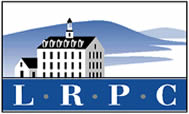HOUSING
Lakes Region Housing Needs Assessment
Housing is an important issue; it helps determines the longevity and sustainability of our region and its economic development. In New Hampshire and throughout the country, available housing is scarce, putting a strain on working families and making it difficult for some businesses to recruit and retain workers.
The Lakes Region Planning Commission has been addressing housing issues head on as part of its Regional Housing Needs Assessment (RHNA). We have examined data, conducted analyses, and collected feedback from regional stakeholders to identify and prioritize the Lakes Region’s top housing issues. This project looks in-depth at the housing needs of our region across all income levels. The final report provides a foundation for change by including tools, recommendations, and strategies for local decision makers to address this problem in their communities. The 2023 Lakes Region Housing Needs Assessment prepared by the Lakes Region Planning Commission was adopted by the Commission on October 23, 2023 and can be found here:
2023 Regional Housing Needs Assessment (RHNA)
As a part of this project, the New Hampshire Housing Toolbox was developed which compiles and describes many of the tools available to New Hampshire cities and towns to produce more housing, especially more housing that is aligned with community needs. Government officials and local housing advocates can use this toolbox to learn what tools might be right for their community, quickly understand how the tools can be used, and know where to look for detailed information and precedents. Click the link to learn more about the NH Housing Toolbox. Download the NH Housing Toolbox.
The RHNA is a state-mandated requirement for all nine regional planning commissions in New Hampshire per RSA 36:47.II. The purpose of the RHNA is to assess “the regional need for housing for persons and families of all levels of income” every five years. As LRPC gathers housing related information for the assessment in our region, we will be coordinating with the other NH regional planning commissions and the State Office of Planning and Development. Together we will leverage each other’s resources and advance a unified approach to determine housing needs across the State.
Our work will include gathering and analyzing datasets on housing and socio-economic demographics from the US Census and other sources. We will also collect information from the public along with local and regional experts, such as:
- planning boards
- developers
- social service agencies
- property managers and more
Outreach strategies include surveys, on-one-one interviews, focus groups, and conversations on the topic of housing in the Lakes Region. The RHNA will weave quantitative and qualitative information together to tell the story of housing in our region. The final report will contain:
- data
- analyses
- strategies
- recommendations
- tools and
- resources
for local decision-makers to address housing issues around the Lakes Region.
Project details
Funded by: American Rescue Plan State and Local Fiscal Recovery Grant
Project period: September 2021 — December 2022; extended to April 2023
Partnering with: NH Housing, Upper Valley Lake Sunapee Regional Planning Commission, Southwest Regional Planning Commission, Southern New Hampshire Planning Commission, Rockingham Planning Commissions, North Country Council, NH Office of Planning and Development, Nashua Regional Planning Commission, and Central New Hampshire Regional Planning Commission.
Resources:
RuralHousingResource.pdf (ruraltransportation.org). PDF document that provides a multitude of resources for rural housing assistance, including federal funding sources and non-federal funding and models (published by the National Association of Development Organizations [NADO] – March 2023). Also located at Rural | USDA.
Quick links to federal funding sources:
- USDA’s Single Family Housing Programs. Offers loans, loan guarantees, and grants to support the purchase, construction, and upkeep of affordable homes in rural America.
- USDA’s Multifamily Housing Programs. Offers similar loans, loan guarantees, and grants targeting multifamily developments.
- USDA’s Community Facilities Programs. Provides information on funding to support public services and facilities in rural communities and available appraisal and architectural services respectively.
- HUD’s Community Development Block Grant Program. Offers funds supporting infrastructure and economic development – including housing rehabilitation and homeowner assistance – primarily targeted at low- and moderate-income persons.
- HUD’s Continuum of Care Program. Offers funds to nonprofit, State, and local governments working to rehouse and support homeless individuals and families.
- HUD’s HOME Investment Partnerships Program. Offers funds via formula grants, supporting the construction, buying, and rehabilitation of affordable housing.
- HUD’s Housing Trust Fund. Offers annual grants to states and state-designated entities to produce and preserve affordable housing for extremely low- and very low-income households, 80% of which must be used for rental housing.
- HUD’s Neighborhood Stabilization Program. Offers funding to stabilize communities experiencing high rates of home abandonment and foreclosure, helping households up to 120% of area median income (AMI).
- HUD’s Recovery Housing Program. Offers grants to states to provide transitional housing to individuals recovering from substance use disorder – with eligible activities also including rehabilitation and relocation.
- The Low-Income Housing Tax Credit. This is an important mechanism to understand in supporting the construction of affordable housing, with Freddie Mac’s analysis suggesting it is key to meeting rental housing needs of rural persistent poverty counties.
